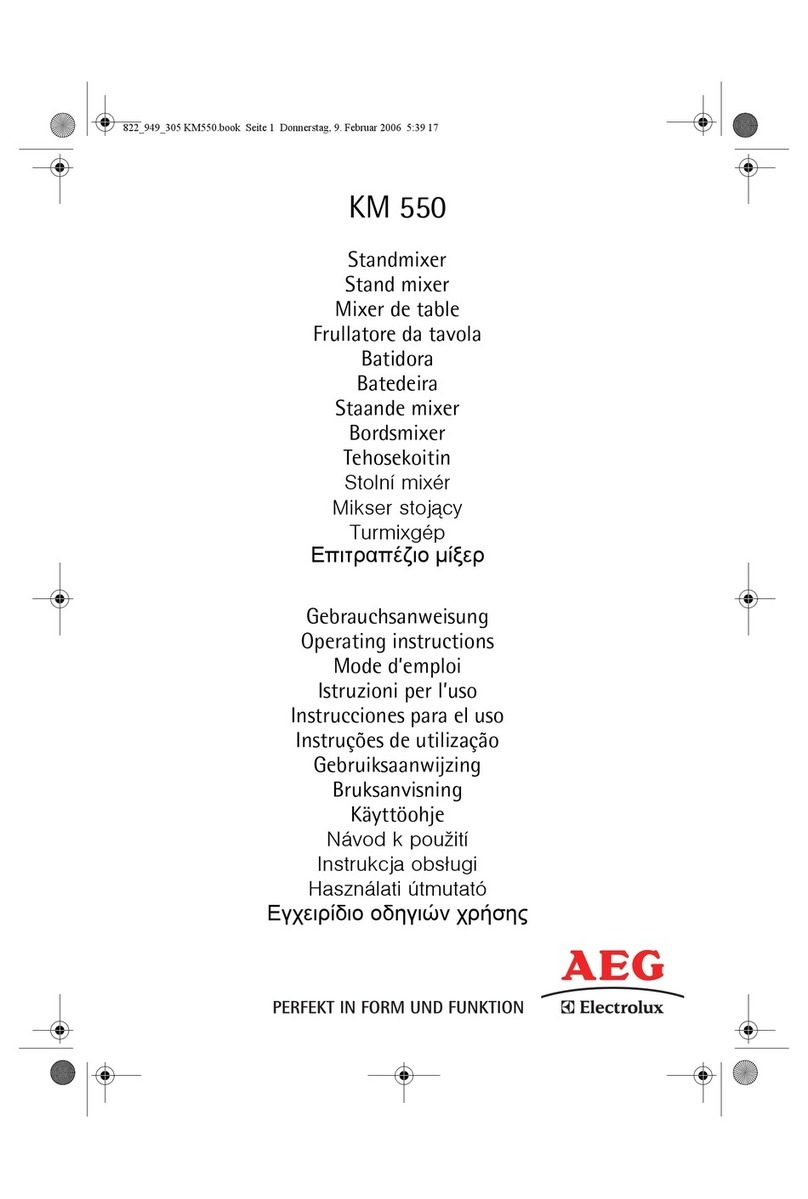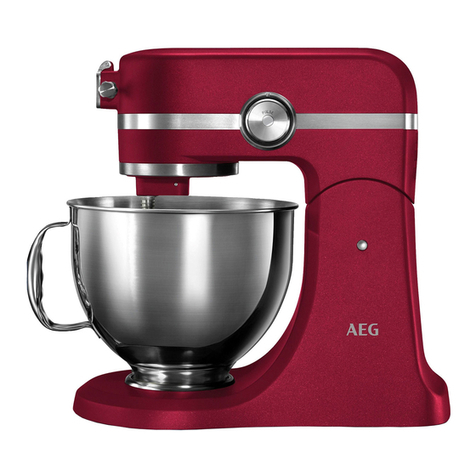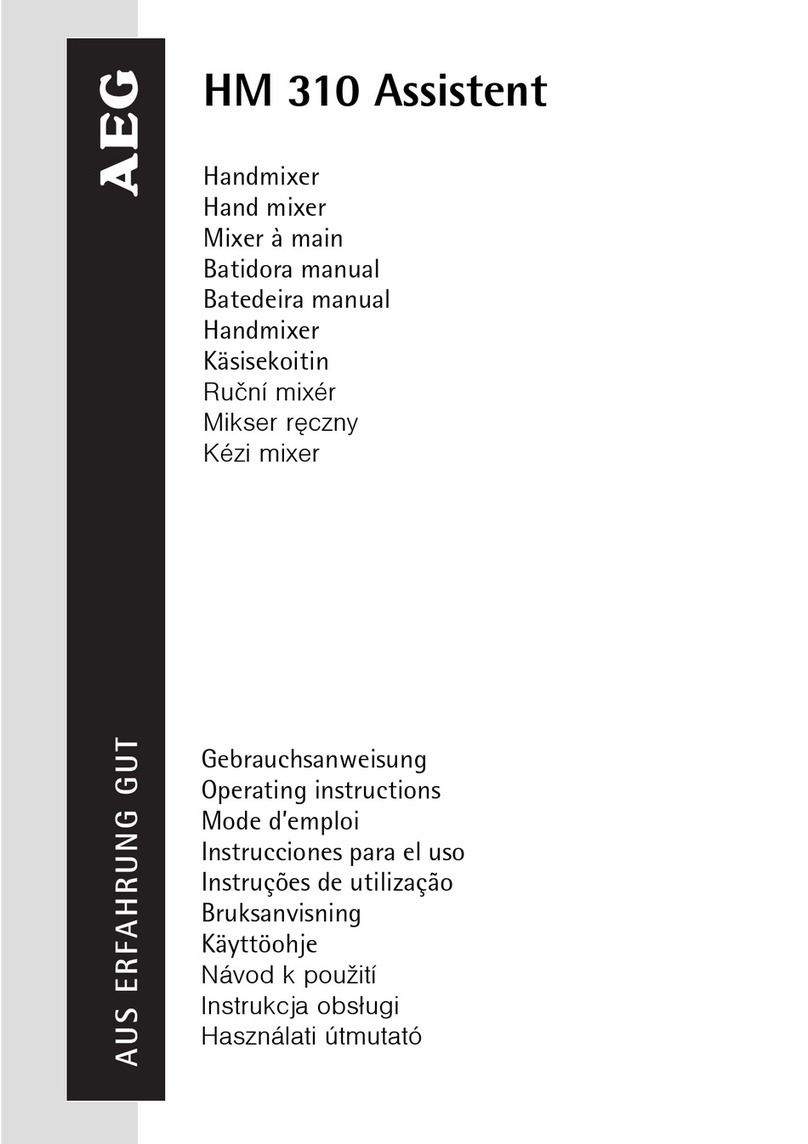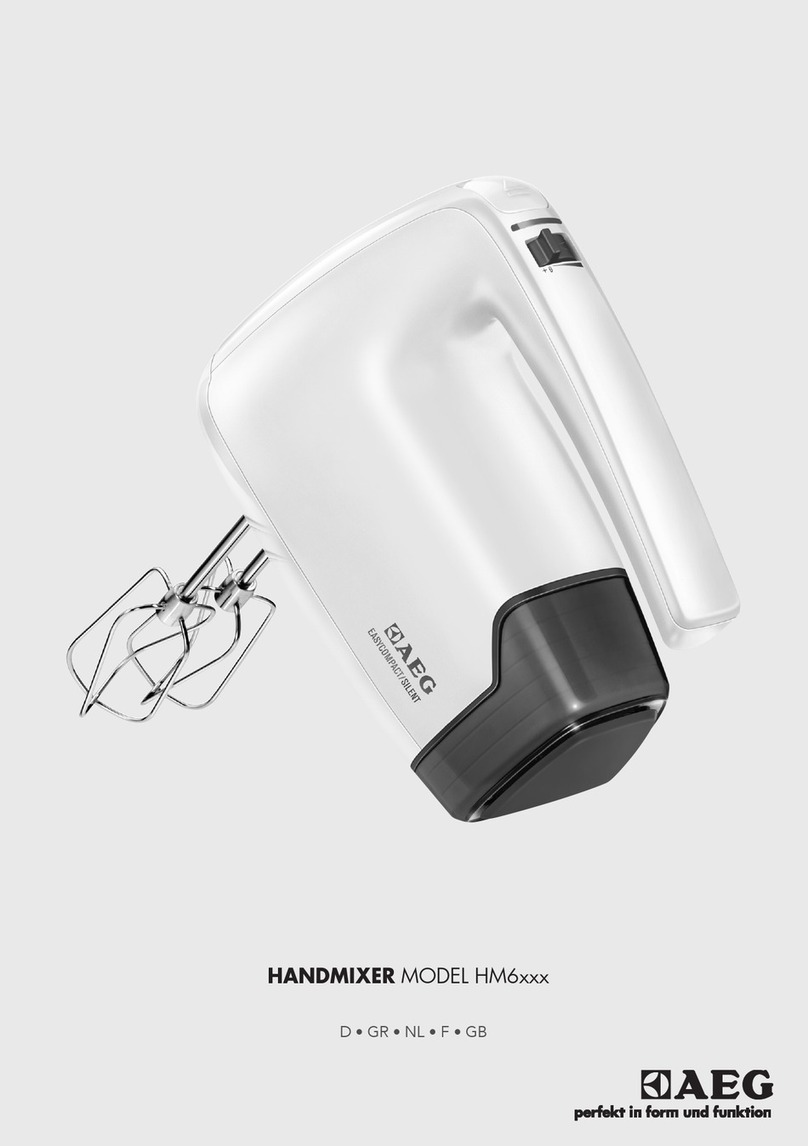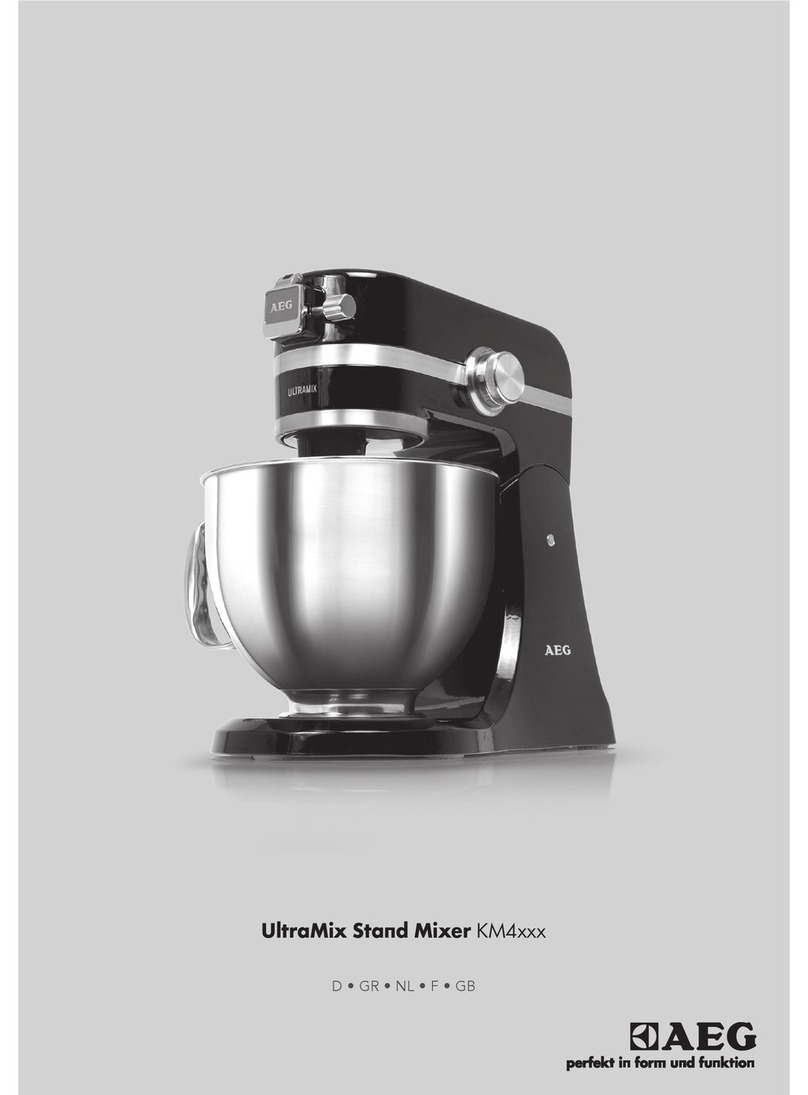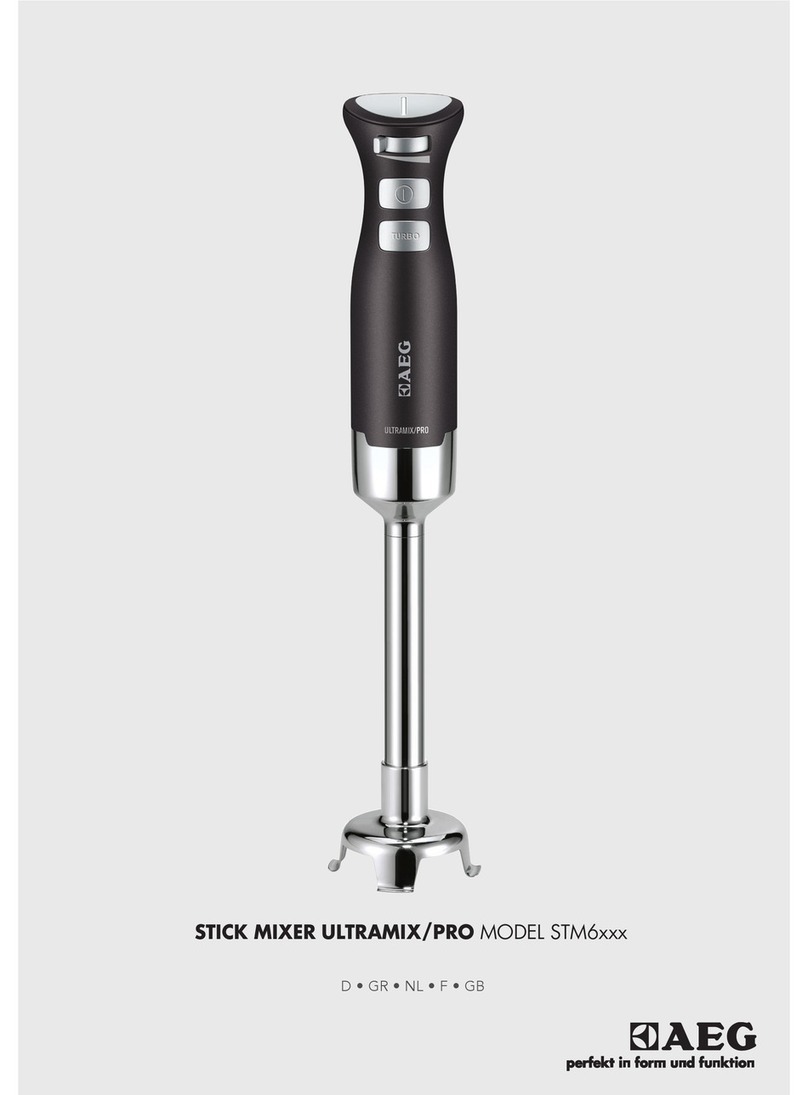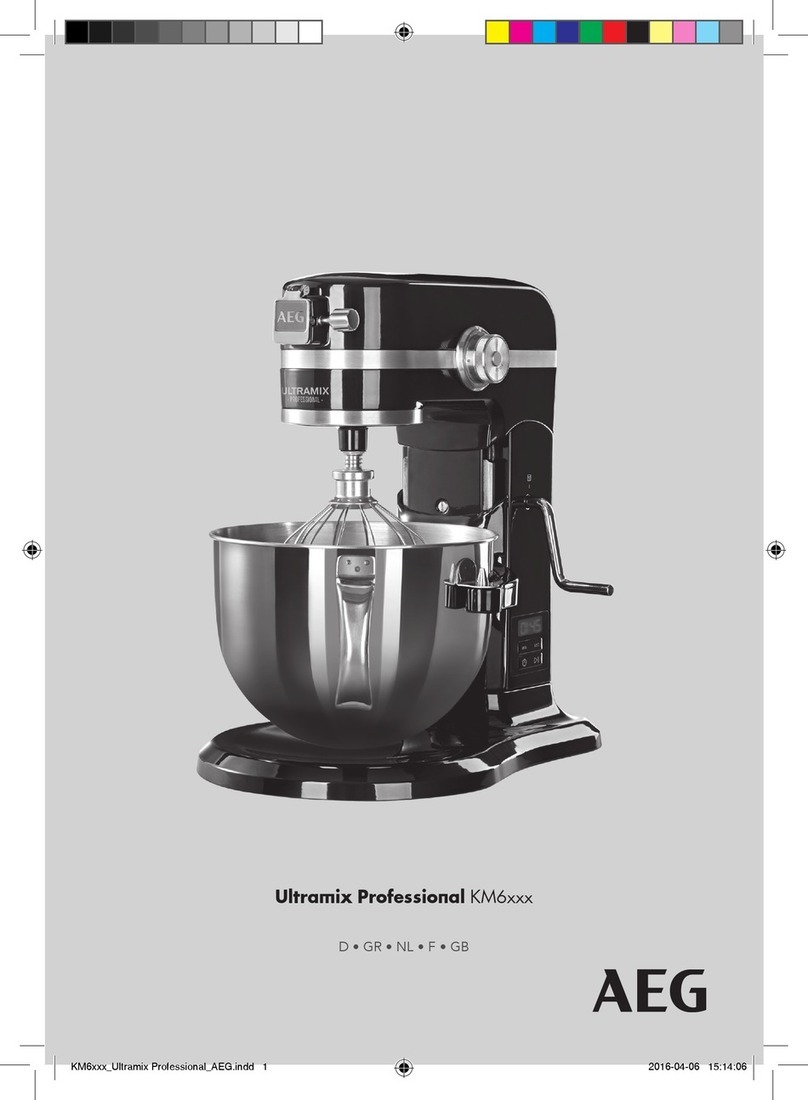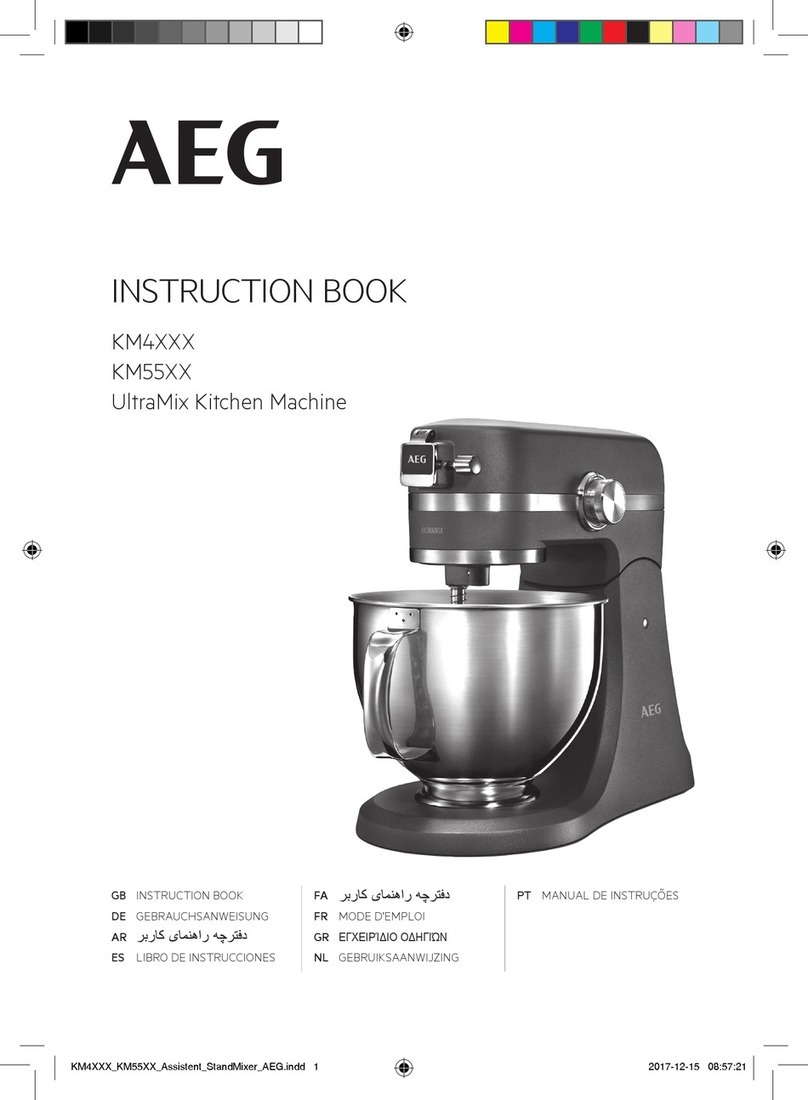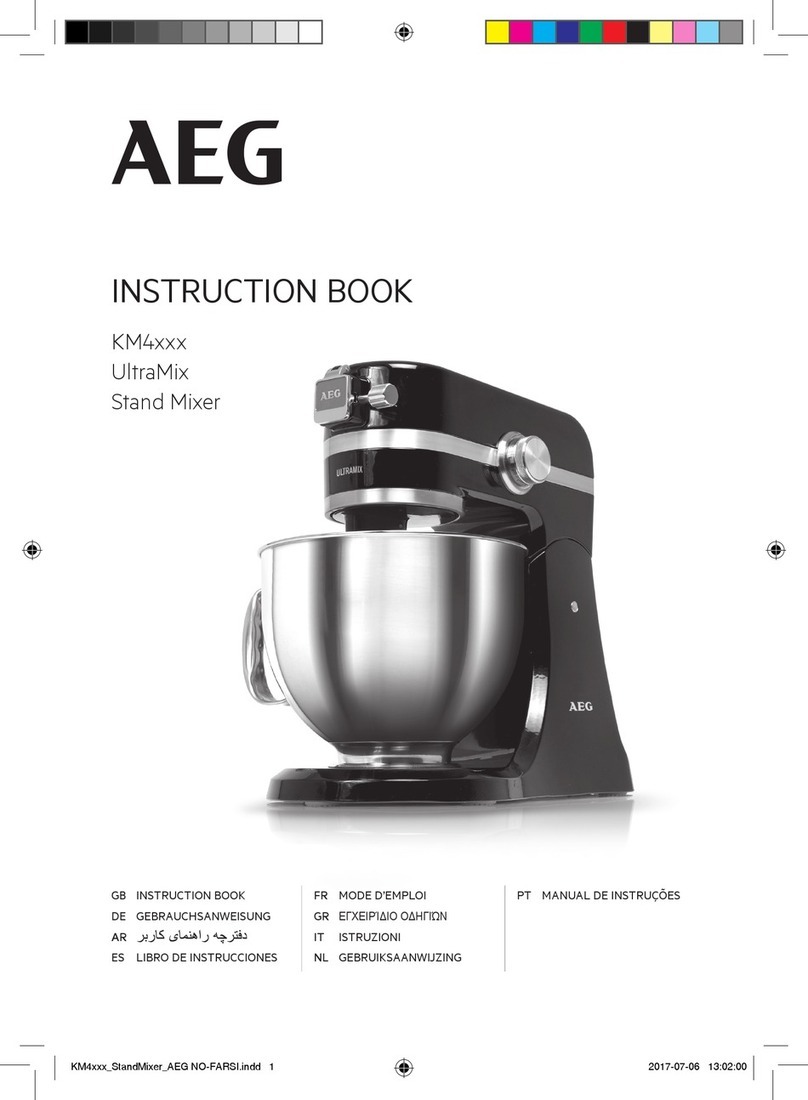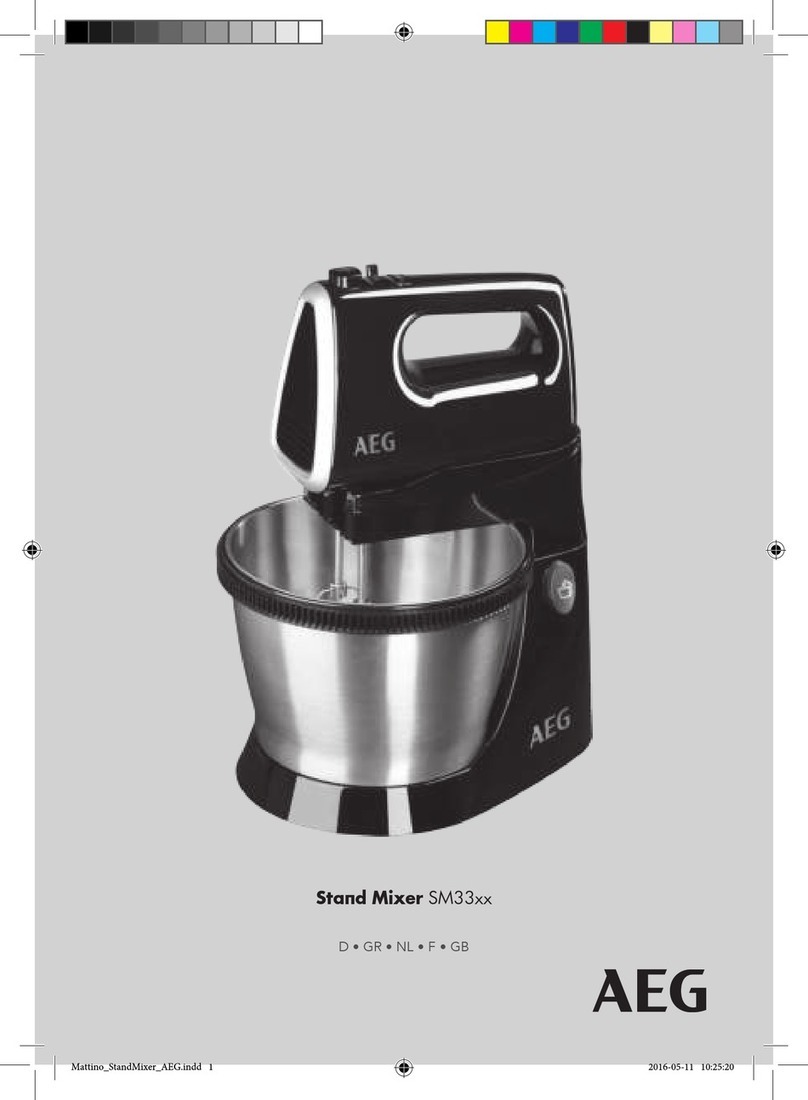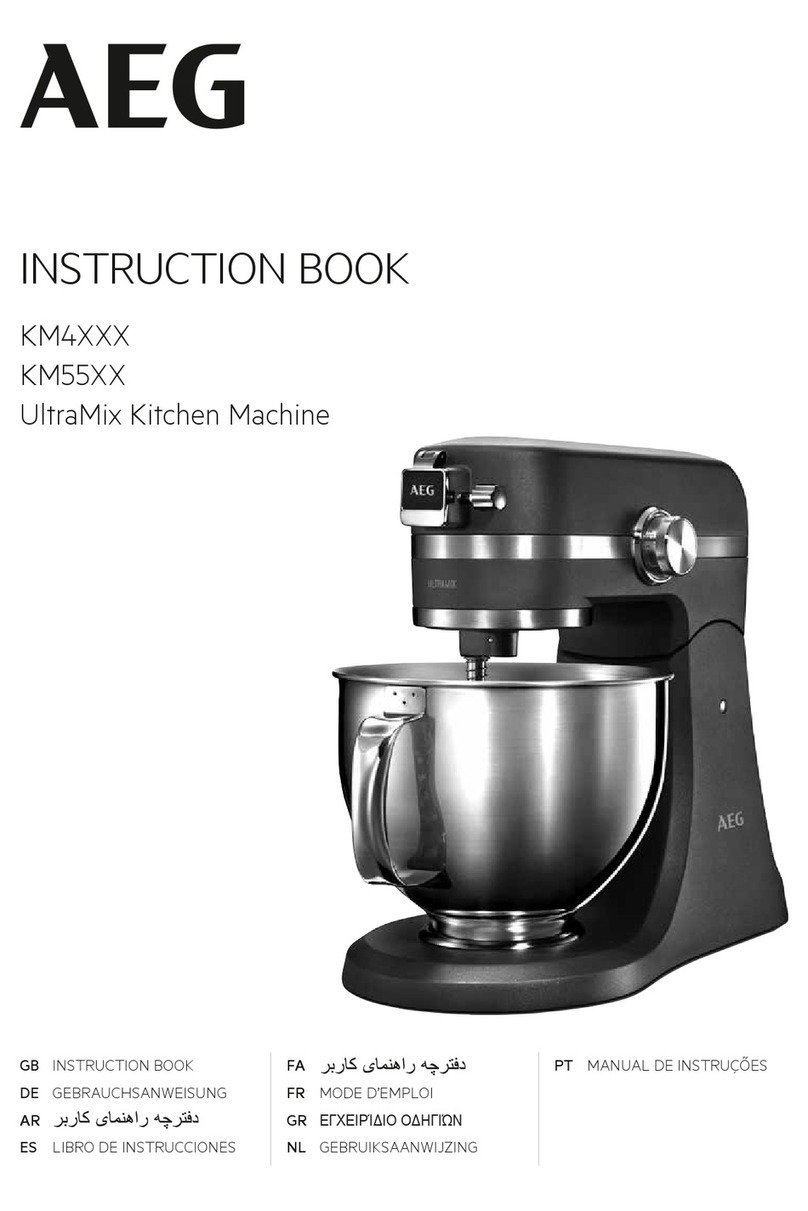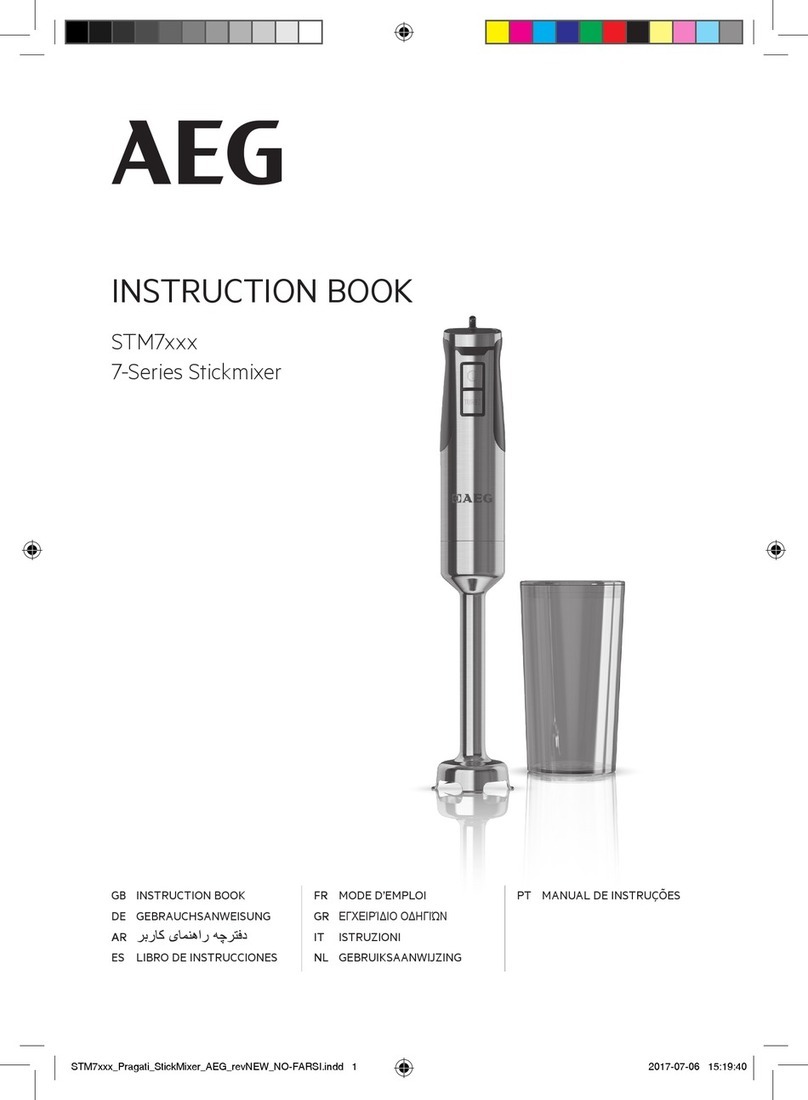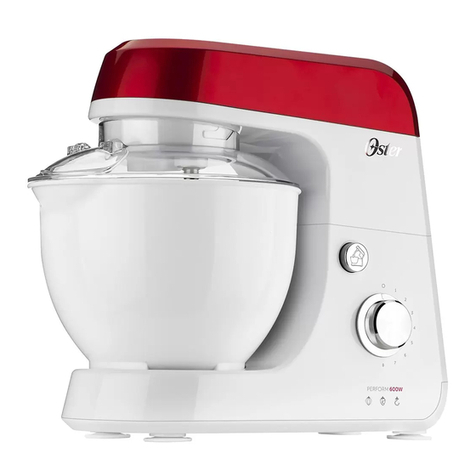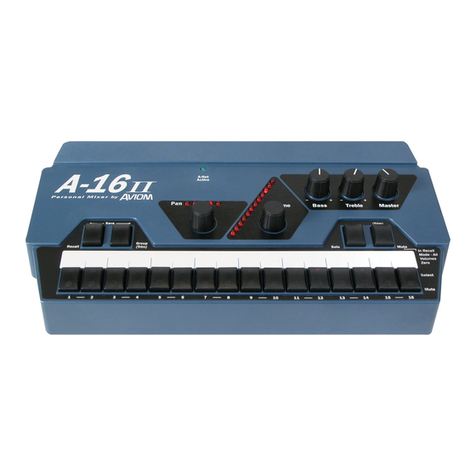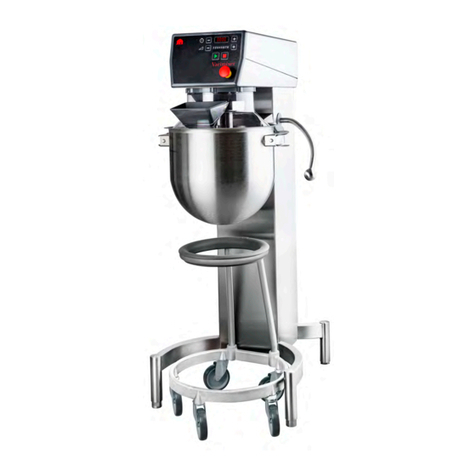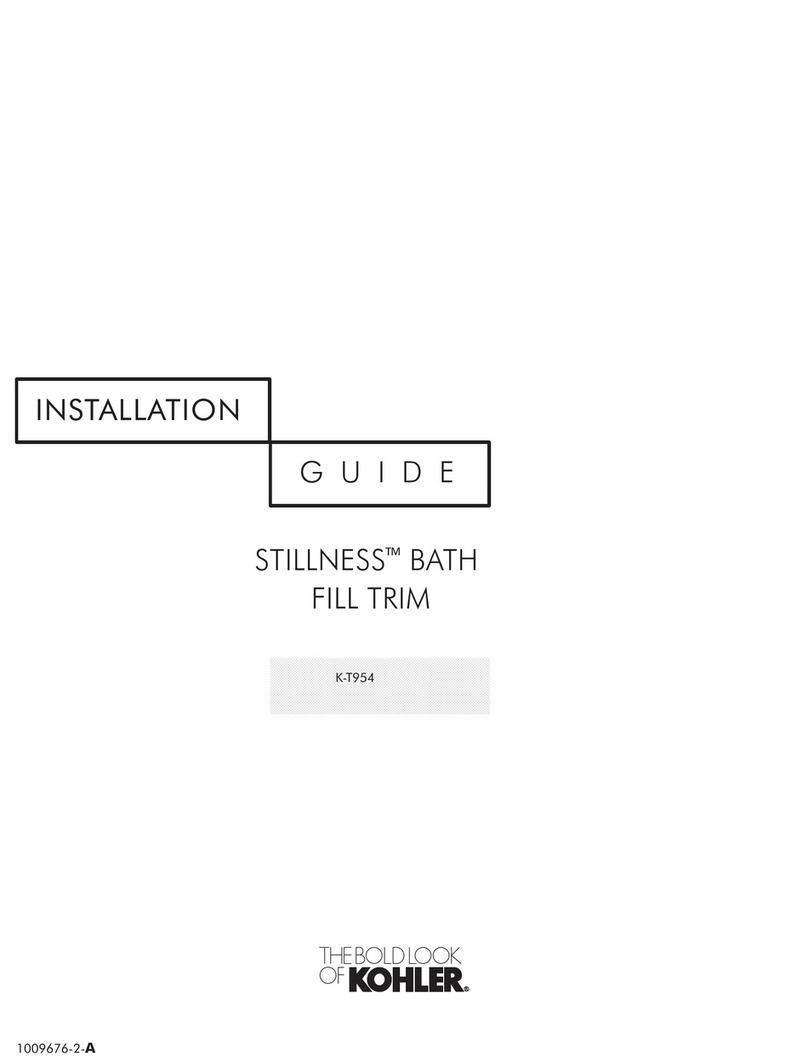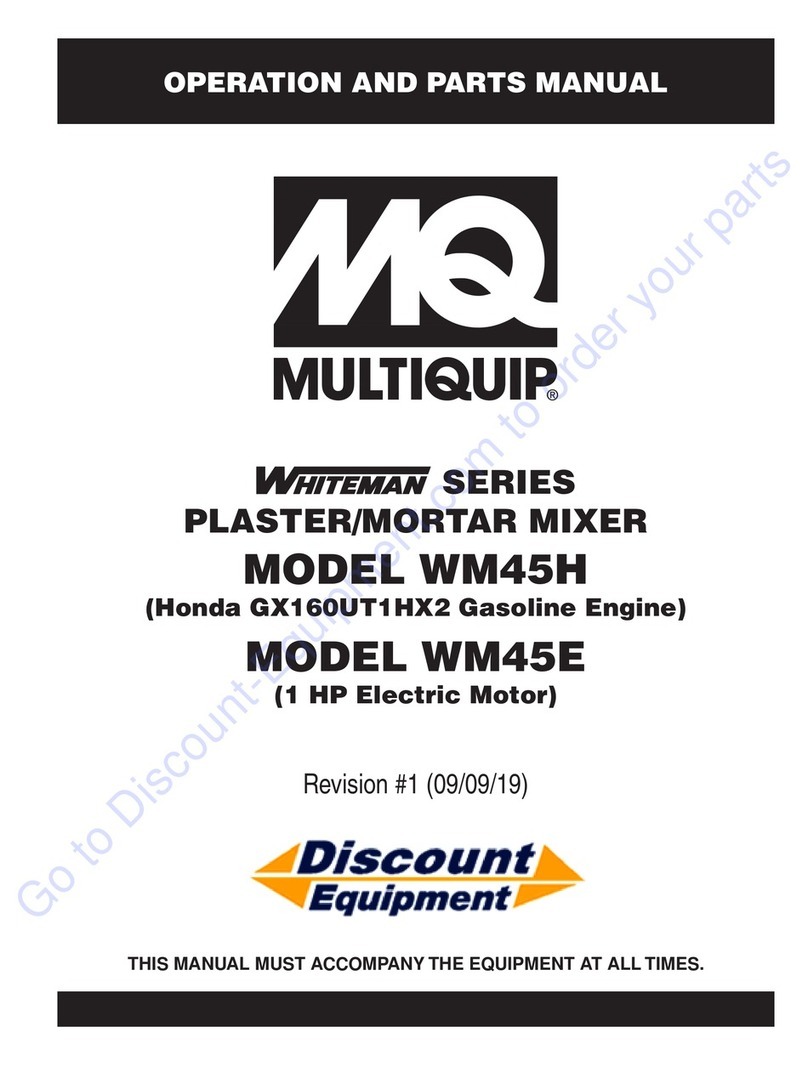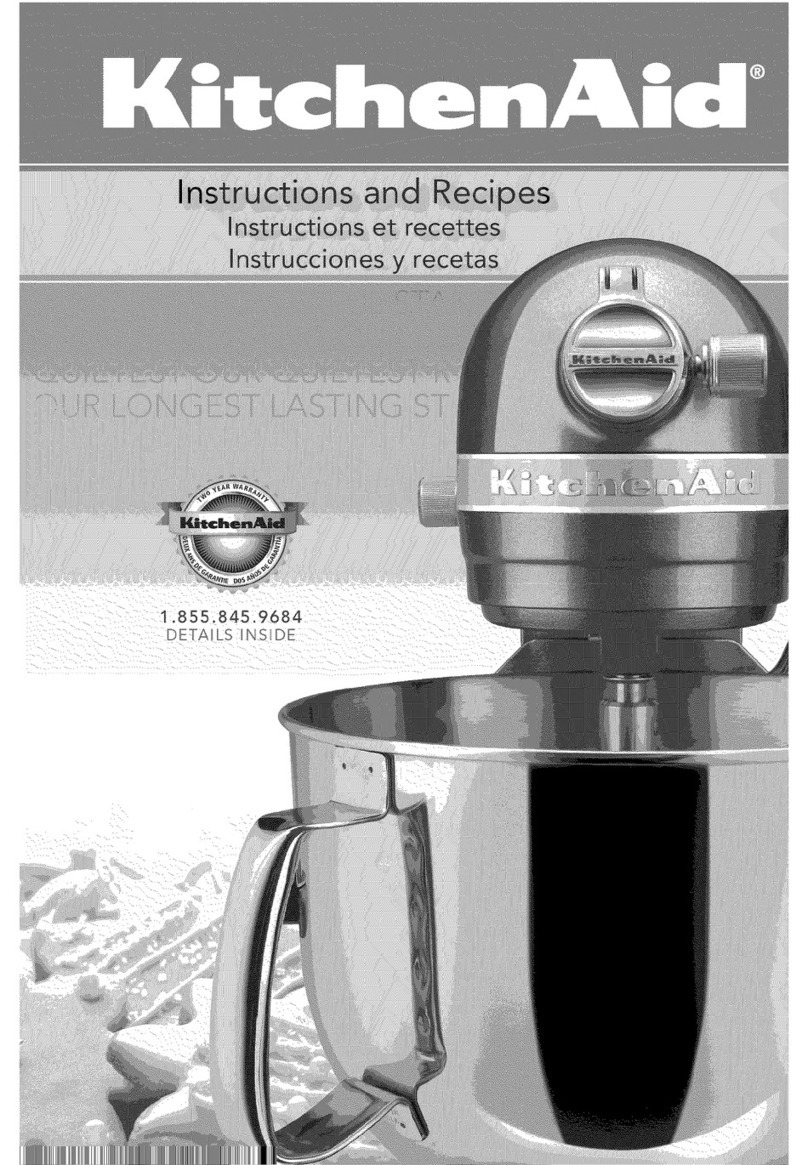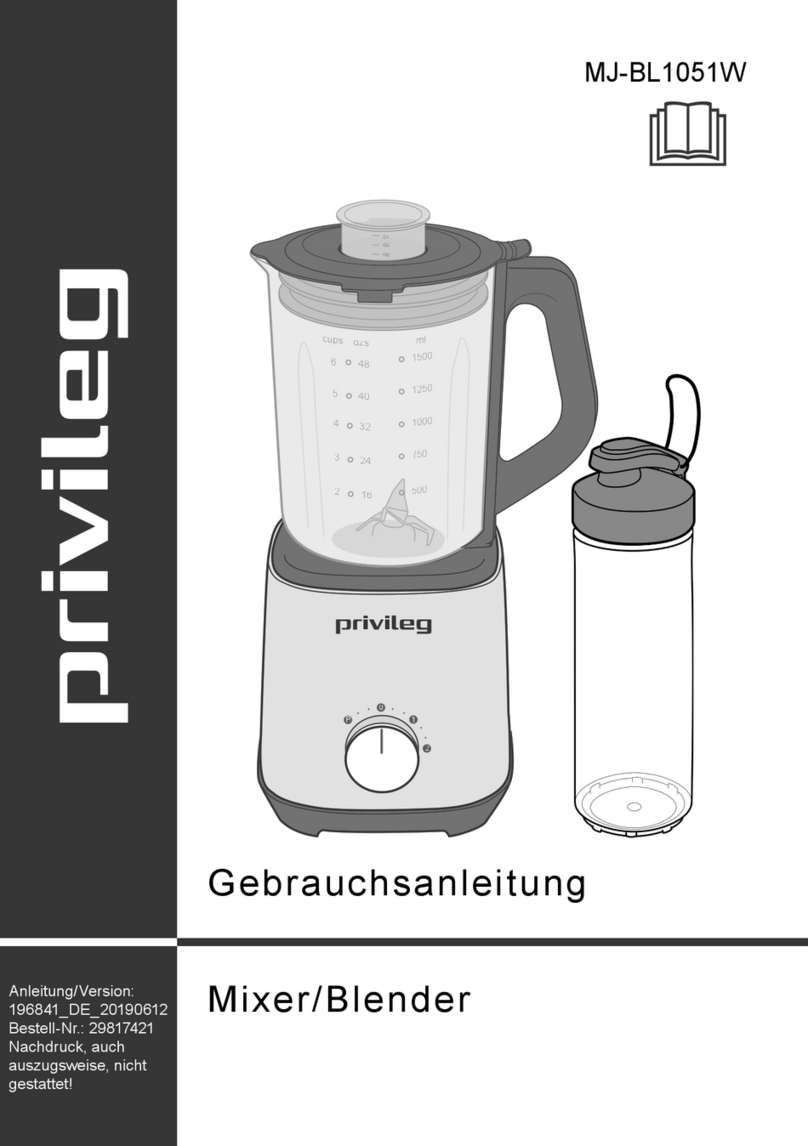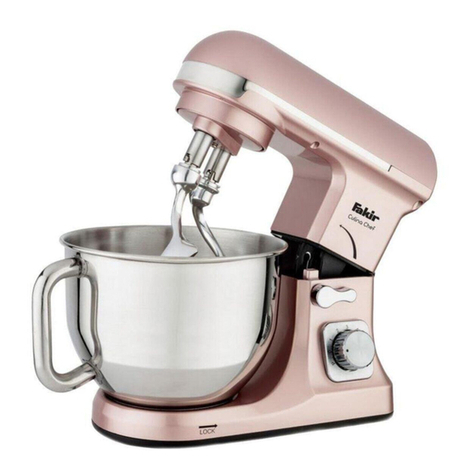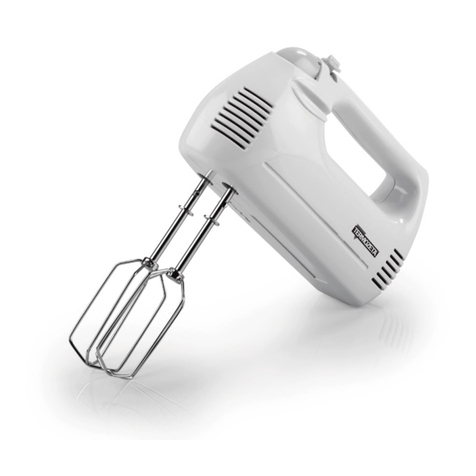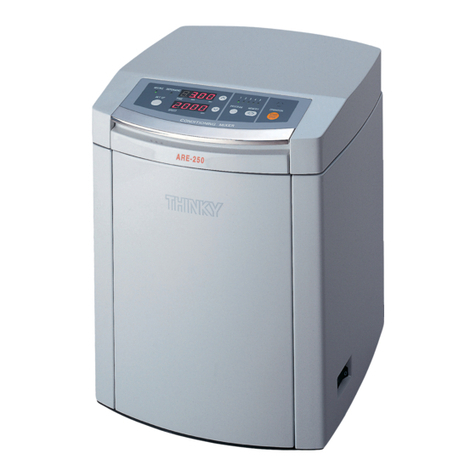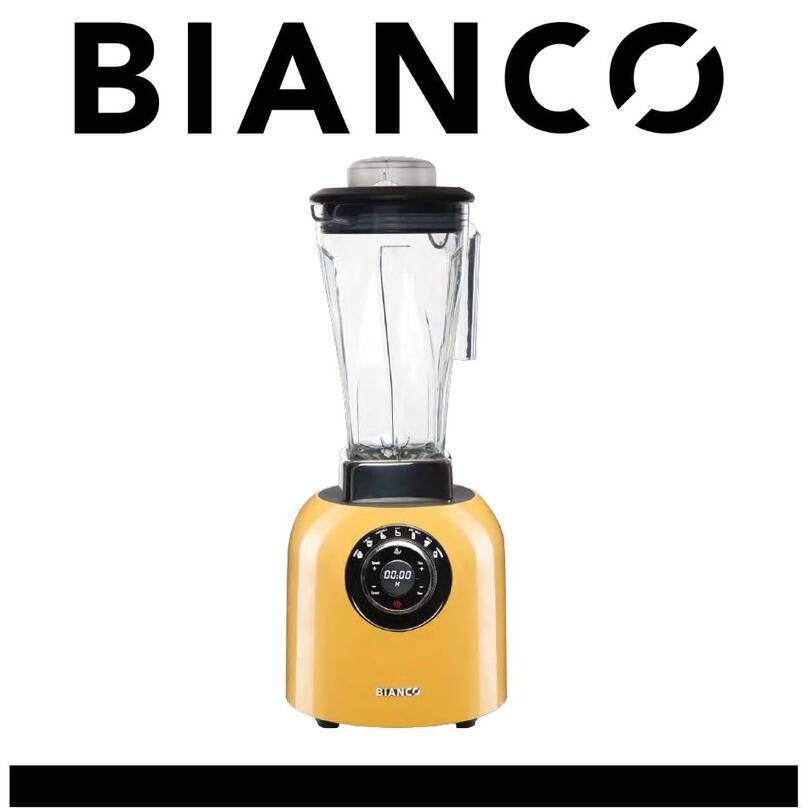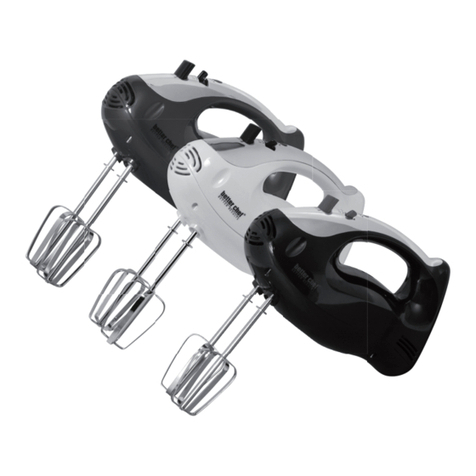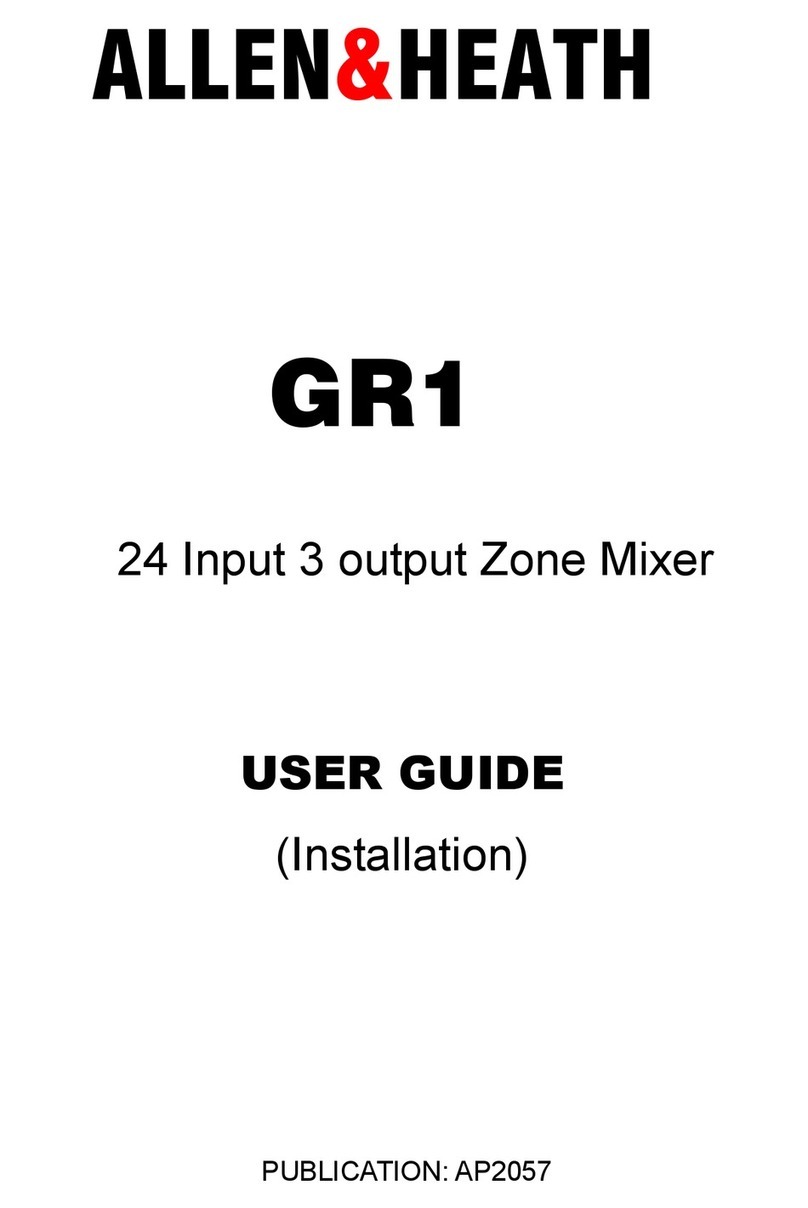
6www.aeg.com
ENGLISH
Thank you for choosing an AEG product. In order to ensure the best results, always use original AEG accessories and
spare parts. They have been designed especially for your product. This product is designed with the environment in
mind. All plastic parts are marked for recycling purposes.
COMPONENTS
A. Accessory release button
B. Speed range selector switch
C. Turbo button
D. Mixer
E. Raise/lower button
F. Lock release
G. Processor stand
H. Steel mixing bowl
I. Whisks
J. Dough hooks
K. Non-slip feet
Picture page 2-3
BEFORE FIRST USE
1 Before using your appliance, remove all packing material, plastic, labels, stickers or tags that may be attached to the
motor base, bowls or attachments.
Warning! Never immerse the housing, plug, or cord in water or any other uid.
Caution! Switch o the appliance and disconnect from supply before changing accessories or approaching parts that
move in use.
2 Wash all parts, except for the motor base, in warm soapy water. Dry each part thoroughly before use.
Whisks and dough hooks can be cleaned with a brush under running water or in the dishwasher.
3 The housing should only be cleaned with a soft damp cloth, then dried with a cloth.
Note: Do not use abrasive cleansers or scouring pads to clean the surfaces of your appliance.
GETTING STARTED
4 Fitting the mixer to the processor stand. Before tting or removing the mixer, switch o the mixer (by moving the
speed selector all the way to the left) and remove the plug from the mains socket. To t, push the mixer on to the
processor stand and press down to lock.
5 Removing the mixer from the processor stand. To remove, press the lock release and pull the mixer upwards.
6 Raising/lowering the mixer. Ensure that the mixer is switched o before raising/lowering! Press the raise/lower but-
ton and swing the mixer up or down, until it clicks in place.
7 Attaching/removing the mixing bowl. Place the bowl on the plate. Make sure that the bottom of the bowl closes
around the plate. It is easier to attach and remove the bowl or the attachments when the mixer is raised.
8 Push whisks or dough hooks into accessory slots underneath the mixer, until they click into place.
9 Before removing whisks or hooks, unplug the handmixer. Then hold the device rmly with one hand, while pressing
the eject button.
Note: The whisks or hooks can only be removed when the speed selector is positioned all the way to the left.
OPERATING INSTRUCTIONS
10 Processing in the mixing bowl must not exceed 2.5 litres. For mixing a heavy dough (fx. pizza, bread) above 1 kg
up to 1.5 kg, we recommend to process only 1 portion and let the mixer cool down to room temperature before start-
ing the next portion or process. This will protect your product from damages of overheating.
11 Operating the mixer. To start the mixer, move the speed selector from left to right. Both the whisks/dough hooks and
the bowl will rotate. Always start mixing at a low speed, then increase.
Warning! Due to risk of injury, never touch running whisks or hooks with either tools or ngers.
12 When the Turbo button is pressed and held during operation, the mixer operates at its maximum speed. Note: Whisks
are not suitable for processing sti mixtures. For heavy dough, such as pie and bread dough, use the dough hooks.
